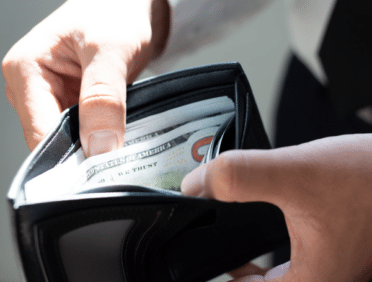Filter by
Anti-Money Laundering (AML) Regulations in the UK
Anti-Money Laundering (AML) regulations are crucial in maintaining the integrity of the UK’s financial system. These regulations are designed to prevent criminals from disguising illegally obtained funds as legitimate income. Compliance with AML laws is not just a legal obligation but a vital practice to protect businesses from financial crime.
AML Compliance and the Responsibility of Businesses
AML compliance is a critical responsibility for businesses operating in the UK. Understanding and sticking to the legal framework, implementing effective CDD and EDD procedures, and staying abreast of technological advancements are essential steps in protecting your business from the risks associated with money laundering.
Maintaining the integrity of the financial system and ensuring that your company operates in accordance with the law are two of the primary goals of compliance. Compliance is not just about avoiding penalties.
The Legal Framework
Key Legislation
The UK has a robust legal framework to combat money laundering, primarily governed by the Money Laundering, Terrorist Financing, and Transfer of Funds (Information on the Payer) Regulations 2017, often referred to as the “MLRs 2017.” These regulations align with the European Union’s Fourth and Fifth Anti-Money Laundering Directives and impose strict obligations on businesses within regulated sectors.
The Proceeds of Crime Act 2002 (POCA) is another critical piece of legislation that defines money laundering offences and provides the legal basis for confiscating assets obtained through criminal activity.
The Role of the Financial Conduct Authority (FCA)
The FCA plays a crucial role in ensuring compliance with AML regulations. It supervises financial institutions and enforces the requirements of the MLRs 2017. Non-compliance can result in severe penalties, including substantial fines and, in extreme cases, imprisonment.
Obligations for Businesses
Customer Due Diligence (CDD)
One of the fundamental requirements under UK AML regulations is Customer Due Diligence (CDD). Businesses must identify and verify the identity of their customers and, where applicable, their beneficial owners. This process includes collecting information such as full name, date of birth, and residential address, along with supporting documents like passports or driving licenses.
Enhanced Due Diligence (EDD)
For higher-risk customers, Enhanced Due Diligence (EDD) measures must be applied. This may involve gathering additional information, such as the source of funds and wealth, and conducting more frequent monitoring of transactions. High-risk factors include dealing with politically exposed persons (PEPs) or customers from jurisdictions with weak AML controls.
Reporting Obligations
Businesses are required to report suspicious activities to the National Crime Agency (NCA) through Suspicious Activity Reports (SARs). Failure to submit a SAR when there is knowledge or suspicion of money laundering can lead to criminal prosecution.
Industry-Specific Considerations
Financial Institutions
Banks, credit unions, and other financial institutions are at the forefront of AML compliance. They must implement robust internal controls, provide staff training, and conduct regular audits to ensure compliance with AML regulations.
Non-Financial Businesses and Professions
Law firms, accountants, and real estate agents, among others, are also subject to AML regulations. They must perform CDD on clients, especially when managing client funds, handling large transactions, or creating trusts.
Money Services Businesses (MSBs)
MSBs, including money transmitters and currency exchangers, are particularly vulnerable to money laundering. They must have stringent AML programs in place, including CDD procedures, ongoing monitoring, and timely SAR reporting.
The Role of Technology in AML Compliance
Transaction Monitoring Systems
Advanced transaction monitoring systems are essential for detecting suspicious activities. These systems analyse customer transactions in real time, flagging unusual patterns for further investigation.
Artificial Intelligence (AI) and Machine Learning
AI and machine learning are increasingly being integrated into AML processes. These technologies can identify complex money laundering schemes that traditional methods might miss, enhancing the effectiveness of compliance efforts.
Consequences of Non-Compliance
Noncompliance with AML regulations can have severe consequences. Financial penalties can reach millions of pounds, and individuals responsible for AML compliance can face personal liability, including imprisonment. Furthermore, businesses may suffer reputational damage, leading to a loss of customer trust and business opportunities.
Frequently Asked Questions (FAQs)
Anti-Money Laundering (AML) refers to the processes, laws, and regulations that financial institutions must follow to prevent, detect, and report money laundering activities. AML is crucial for financial institutions in the UK because it helps protect the financial system from being exploited by criminals for illicit activities.
Through their adherence to anti-money laundering regulations, institutions play a significant role in preserving the integrity of the financial system in the United Kingdom and protecting against the financing of terrorist organisations.
The Importance for Financial Institutions
Financial institutions are often targeted by criminals attempting to disguise the origins of their illegally obtained funds. Without strict AML procedures, these institutions risk facilitating the movement of dirty money, which can lead to severe legal and reputational consequences.
The UK’s Financial Conduct Authority (FCA) mandates that all financial institutions implement robust AML frameworks, ensuring compliance with both national and international standards.
Compliance and Consequences
Failure to comply with AML regulations can lead to significant fines, legal penalties, and damage to an institution’s reputation. When a company fails to comply with regulations, it may be subjected to increased scrutiny from the relevant authorities, which may significantly disrupt business operations.
For these reasons, AML compliance is not just a legal obligation but a critical component of a financial institution’s risk management strategy.
Not only do anti-money laundering regulations apply to financial institutions in the United Kingdom, but they also apply to a wide variety of other businesses and professions. The scope of compliance extends to any business or profession that is deemed to be at risk of being used for money laundering purposes.
This broad application is designed to create a comprehensive barrier against money laundering across multiple sectors.
Regulated Sectors
AML regulations apply to financial institutions such as banks, credit unions, and insurance companies, as well as non-financial businesses and professions (NFDPs). NFDPs include real estate agents, accountants, lawyers, and dealers in high-value goods such as precious metals and stones.
These entities must comply with the Money Laundering Regulations 2017 (as amended), which outline specific obligations for customer due diligence, record-keeping, and reporting suspicious activities.
Obligations and Compliance
Each of these businesses and professions must implement AML policies and procedures, conduct regular training, and appoint a Money Laundering Reporting Officer (MLRO) to oversee compliance.
Failure to meet these requirements can result in severe penalties, including fines and imprisonment, underscoring the importance of adhering to AML regulations.
Businesses in the United Kingdom are required to comply with a variety of anti-money laundering regulations, which are designed to prevent the laundering of money and the financing of terrorist organisations.
These regulations are primarily enforced under the Money Laundering Regulations 2017 (as amended), which align with EU directives and international standards. Compliance with these regulations is critical for businesses operating in regulated sectors.
Key Regulations
The Money Laundering Regulations 2017 require businesses to conduct Customer Due Diligence (CDD), monitor transactions, report suspicious activities, and maintain accurate records. The Proceeds of Crime Act 2002 (POCA) also plays a central role by criminalising money laundering activities and setting out the legal framework for confiscating criminal assets.
The Terrorism Act 2000 imposes obligations on businesses to report any suspected involvement in terrorist financing.
Regulatory Enforcement
The Financial Conduct Authority (FCA) and HM Revenue & Customs (HMRC) are the main regulators responsible for enforcing AML regulations in the UK. These bodies have the authority to impose fines, sanctions, and other penalties on businesses that fail to comply with AML requirements.
Regular audits and inspections are conducted to ensure ongoing compliance, making it essential for businesses to stay up to date with the latest regulatory developments.
The Money Laundering Reporting Officer (MLRO) is a key figure in any UK financial institution’s AML framework. The MLRO is responsible for ensuring the institution complies with all AML regulations and for reporting any suspicious activity to the relevant authorities. This role is critical in safeguarding the institution from being exploited for money laundering purposes.
Key Responsibilities
The MLRO must develop and implement the institution’s AML policies and procedures, ensuring they are in line with current regulations. They are responsible for receiving internal reports of suspicious activities, investigating these reports, and, where necessary, filing Suspicious Activity Reports (SARs) with the National Crime Agency (NCA).
The MLRO also plays a crucial role in training staff on AML compliance and ensuring that the institution’s AML measures are effective and up-to-date.
Accountability and Compliance
The MLRO is accountable to both the institution’s senior management and regulatory bodies. They must maintain comprehensive records of all AML activities and ensure that the institution can demonstrate compliance with regulatory requirements during audits and inspections.
The MLRO’s effectiveness is vital in protecting the institution from legal risks and reputational damage associated with money laundering.
The Proceeds of Crime Act 2002 (POCA) is a cornerstone of the UK’s AML legislation, providing a framework for the identification, investigation, and prosecution of money laundering activities. POCA has a significant impact on AML compliance for businesses, imposing strict obligations to prevent and report money laundering.
Understanding POCA is essential for businesses to ensure full compliance with AML requirements.
The Impact on Business Practices
POCA requires businesses to report any knowledge or suspicion of money laundering to the National Crime Agency (NCA) through a Suspicious Activity Report (SAR). Failure to report can result in criminal charges against both the business and individual employees.
POCA also grants authorities the power to seize assets that are suspected to be proceeds of crime, even if no criminal conviction has been secured, making it imperative for businesses to conduct thorough due diligence.
Legal and Regulatory Compliance
Under POCA, businesses must maintain robust AML systems and controls to prevent money laundering. This includes implementing Customer Due Diligence (CDD) measures, conducting ongoing monitoring, and keeping accurate records.
Non-compliance with POCA can lead to severe penalties, including unlimited fines and imprisonment, highlighting the need for businesses to prioritise AML compliance as part of their overall risk management strategy.
Non-compliance with AML regulations in the UK can result in severe penalties, reflecting the serious nature of money laundering offences. Penalties range from substantial fines to imprisonment for individuals involved in breaches of the law.
These penalties underscore the importance of adhering to AML regulations to avoid legal and financial repercussions.
Financial Penalties
Businesses that fail to comply with AML regulations may face significant financial penalties imposed by regulatory authorities such as the Financial Conduct Authority (FCA) or HM Revenue & Customs (HMRC). Fines can reach into the millions of pounds, depending on the severity of the breach and the level of negligence involved.
These fines are designed to serve as a deterrent and to encourage businesses to maintain high standards of compliance.
Criminal Penalties and Reputational Damage
In addition to financial penalties, individuals who are found guilty of serious breaches of AML regulations can face imprisonment. Under the Proceeds of Crime Act 2002 (POCA), individuals can be sentenced to up to 14 years in prison for money laundering offences.
Businesses that do not comply with anti-money laundering regulations run the risk of suffering significant reputational damage, which can result in the loss of customers and opportunities for business. This highlights the critical need for rigorous AML controls and ongoing compliance efforts.
AML training is a crucial component of compliance for businesses in regulated sectors, ensuring that employees understand their responsibilities under AML regulations. Regular training is necessary to keep staff informed about the latest developments in AML laws and best practices.
The frequency of AML training should be aligned with regulatory expectations and the specific risks faced by the business.
Frequency and Requirements
In the UK, businesses are required to provide AML training to their employees on a regular basis, typically at least once a year. However, the exact frequency may vary depending on the nature of the business, the risk level of its operations, and any changes in legislation.
Training should cover key aspects such as identifying suspicious activities, understanding the legal obligations under the Proceeds of Crime Act 2002 (POCA), and knowing how to report concerns effectively.
Tailored Training Programs
Training programmes for anti-money laundering (AML) should be adapted to meet the specific requirements of the company and the employees working for it. For instance, staff in higher-risk roles may require more frequent or in-depth training.
New employees should receive AML training as part of their induction process to ensure they are fully aware of their responsibilities from the outset. Regular updates should be provided to all staff whenever there are changes to AML laws or the business’s internal policies.
A Suspicious Activity Report (SAR) is a key component of the UK’s AML framework, allowing businesses to report suspicious activities that may be linked to money laundering or terrorist financing. Handling SARs correctly is critical to fulfilling legal obligations and helping to prevent financial crime. In the UK, SARs are submitted to the National Crime Agency (NCA).
Reporting Suspicious Activities
When a business or employee identifies a transaction or activity that raises suspicion, they are legally required to report it by submitting a SAR to the NCA. This report must be made as soon as possible and should include detailed information about the suspicious activity, including the parties involved and the reasons for suspicion.
Employees are not allowed to disclose to the subject of the SAR that they are being reported, as this could be considered “tipping off” and cause criminal charges to be brought against them. It is essential that the reporting process be kept confidential.
Legal Obligations and Confidentiality
Businesses must have internal procedures in place to ensure that SARs are handled correctly and in compliance with legal requirements. The MLRO is typically responsible for overseeing the SAR process, ensuring that reports are submitted promptly and that all relevant information is included.
The NCA will assess the SAR and decide whether further investigation is warranted. Businesses must make certain that their employees are trained to identify and report suspicious activities, and they must also make sure that they keep accurate records of all SARs that are submitted.
Identifying and assessing the risk of money laundering is a fundamental part of an effective AML strategy. Businesses must adopt a risk-based approach, tailoring their AML controls to the specific risks they face. This involves evaluating factors such as customer profiles, transaction patterns, and geographic exposure to assess the likelihood of money laundering activities.
Risk Assessment Process
The risk assessment process involves identifying potential risks by analysing various aspects of the business, including the types of products and services offered, the nature of the customers, and the geographic areas in which the business operates.
Businesses must consider both internal and external risks, such as changes in regulation, economic conditions, and emerging money laundering techniques. Once risks are identified, businesses should categorise them according to their severity and likelihood, allowing them to allocate resources effectively.
Ongoing Monitoring and Review
Risk assessment is not a one-time activity; it requires ongoing monitoring and review to ensure that the business’s AML measures remain effective. Businesses should regularly update their risk assessments to reflect any changes in their operations or the broader regulatory environment.
Businesses have the ability to guarantee that their anti-money laundering (AML) controls are responsive to new threats and that they continue to comply with legal requirements if they keep their risk assessments up to date continuously.
Customer Due Diligence (CDD) is a critical process for businesses in the UK to identify and verify the identity of their customers, ensuring they are not facilitating money laundering or terrorist financing. Effective CDD helps businesses comply with AML regulations and mitigate the risk of financial crime.
The implementation of best practices in CDD is absolutely necessary in order to maintain compliance and safeguard the company.
Standard and Enhanced CDD
Standard CDD involves verifying the customer’s identity using reliable, independent sources such as passports, driving licenses, or utility bills. For higher-risk customers or transactions, Enhanced Due Diligence (EDD) is required, which may involve obtaining additional information, such as the source of funds or wealth, and conducting more thorough background checks.
Businesses must also monitor ongoing relationships and transactions to identify any suspicious activities.
Record-Keeping and Updates
Accurate record-keeping is a key component of effective CDD. Businesses must maintain records of all documents, data, and information obtained during the CDD process for at least five years after the end of the customer relationship. Regular updates to CDD are also necessary, especially when there are changes in the customer’s situation or the risk profile of the business relationship.
Streamlining CDD processes and ensuring compliance with regulatory requirements can be beneficially accomplished through the implementation of automated systems.
Brexit has led to significant changes in the regulatory landscape in the UK, including those related to AML compliance. While the UK is no longer bound by EU regulations, it has retained and adapted many of the AML rules that were in place prior to Brexit.
Companies have a responsibility to be aware of these changes in order to guarantee that they continue to comply with AML regulations.
Regulatory Adjustments
Following Brexit, the UK has made adjustments to its AML framework to reflect its new status outside the EU. The Money Laundering Regulations 2017, as amended, continue to form the basis of AML compliance in the UK, but there have been changes to certain aspects, such as the UK’s ability to implement sanctions independently from the EU.
Businesses need to stay informed about these changes and how they may impact their operations, particularly those involved in cross-border transactions.
Continued Compliance Obligations
Despite Brexit, the UK remains committed to upholding high standards of AML compliance, in line with international best practices and obligations under the Financial Action Task Force (FATF).
Businesses must continue to adhere to UK-specific AML regulations while also considering any new requirements that may arise as the UK develops its own regulatory framework independent of the EU. Staying informed about these developments is essential for maintaining compliance and avoiding penalties.
agents, accountants, and lawyers, are subject to specific AML requirements to prevent them from being exploited for money laundering activities.
These requirements are crucial for maintaining the integrity of the financial system and ensuring that all sectors contribute to the fight against money laundering.
Key Requirements for NFDPs
NFDPs are required to conduct Customer Due Diligence (CDD) to verify the identity of their clients and assess the risk of money laundering. They must also keep detailed records of transactions and client information for at least five years and report any suspicious activities to the National Crime Agency (NCA) via a Suspicious Activity Report (SAR).
NFDPs must appoint a Money Laundering Reporting Officer (MLRO) who is responsible for overseeing AML compliance within the organisation.
Training and Compliance
AML training is mandatory for all employees in NFDPs to ensure they understand the risks of money laundering and their role in mitigating those risks. Regular audits and compliance checks are also required to ensure that AML policies and procedures are being followed effectively.
NFDPs that fail to comply with these requirements can face significant penalties, including fines and imprisonment, making it essential for these businesses to prioritise AML compliance.
Keeping AML policies and procedures up to date with the latest regulations is essential for companies to maintain compliance and avoid legal penalties. Regular reviews and updates are necessary to ensure that policies reflect the current legal landscape and best practices.
Companies must be proactive in monitoring regulatory changes and adjusting their AML frameworks accordingly.
Regular Reviews and Audits
Companies should conduct regular reviews of their AML policies and procedures, at least annually, or whenever there is a significant change in regulations. This review process should involve input from the Money Laundering Reporting Officer (MLRO) and other key stakeholders to ensure that all aspects of the business are considered.
Internal audits should also be carried out in order to evaluate the efficiency of the anti-money laundering controls that are currently in place and to locate any areas that could use improvement.
Staying Informed
To keep up with the latest regulations, companies should subscribe to updates from regulatory bodies such as the Financial Conduct Authority (FCA) and HM Revenue & Customs (HMRC). Attending industry conferences, participating in professional networks, and engaging with legal experts can also help companies stay informed about changes in AML regulations.
Companies are able to guarantee that their anti-money laundering (AML) policies and procedures continue to be effective and in compliance with regulations if they preserve an ongoing commitment to regulatory awareness.
The Financial Action Task Force (FATF) is an international body that sets standards and promotes effective measures for combating money laundering and terrorist financing. The FATF plays a significant role in shaping AML regulations in the UK by providing guidance and recommendations that influence national policies.
Upholding the integrity of the United Kingdom’s financial system requires strict adherence to the standards set forth by the Financial Action Task Force (FATF).
FATF Standards and UK Regulations
The FATF issues a set of 40 recommendations that provide a comprehensive framework for AML and Counter-Terrorist Financing (CTF) measures. These recommendations are designed to be adaptable to different legal and financial systems and are used by the UK to inform its AML regulations, including the Money Laundering Regulations 2017.
The United Kingdom is subjected to mutual evaluations on a regular basis by the Financial Action Task Force (FATF) in order to assess its compliance with these standards and to identify areas in which it can improve.
Influence on National Policies
FATF’s influence extends beyond just the regulatory framework; it also impacts the enforcement and implementation of AML measures in the UK.
The United Kingdom ensures that its anti-money laundering (AML) regime is in line with international best practices by adhering to the standards set forth by the Financial Action Task Force (FATF). This is essential for the UK to maintain its global standing and for facilitating international cooperation in the fight against money laundering.
Companies that conduct business in the United Kingdom are required to be familiar with the standards established by the Financial Action Task Force (FATF) and to ensure that their anti-money laundering (AML) procedures are in accordance with these guidelines.
An AML audit or investigation by regulatory authorities is a critical event that requires careful and prompt attention from businesses. Proper preparation and a clear understanding of the process are essential for a successful outcome.
All employees must be aware of their roles during the audit or investigation, and businesses have a responsibility to ensure that their anti-money laundering documentation is in order.
Preparation and Documentation
Before an audit or investigation, businesses should conduct internal reviews to ensure that all AML policies, procedures, and records are up to date and comply with current regulations. The Money Laundering Reporting Officer (MLRO) should play a central role in this process, ensuring that the business can provide accurate and comprehensive documentation to the auditors or investigators.
Having clear communication channels in place is also very important, as it ensures that all relevant staff members are kept informed and are able to provide assistance with the auditing process whenever it is required.
Cooperation and Transparency
During the audit or investigation, businesses should cooperate fully with the regulatory authorities, providing all requested information promptly and accurately. Any attempt to conceal information or obscure facts can result in increased scrutiny and possible penalties. Transparency is of the utmost importance.
The findings of the audit or investigation should be carefully reviewed by the businesses, and any changes that are recommended should be implemented in order to improve their anti-money laundering compliance.
Effective AML monitoring systems are essential for detecting and preventing money laundering activities within a business. These systems should be capable of identifying suspicious transactions and behaviours in real-time, allowing for prompt action.
Businesses must ensure that their AML monitoring systems are robust, scalable, and capable of adapting to changing regulatory requirements.
Automation and Real-Time Monitoring
One of the key features of an effective AML monitoring system is the ability to automate the detection of suspicious activities. This includes monitoring transactions for unusual patterns, flagging high-risk customers, and alerting compliance teams to potential issues.
Real-time monitoring is crucial, as it enables businesses to respond quickly to suspicious activities, reducing the risk of money laundering occurring undetected.
Customisation and Scalability
AML monitoring systems should be customisable to fit the specific needs of the business. Among these features is the capability to modify alert thresholds in accordance with the level of risk that the company is willing to take and the characteristics of its operations.
Scalability is also important, as the system must be able to handle increased volumes of transactions and customers as the business grows. Regular updates and testing are necessary to ensure that the system remains effective and compliant with the latest regulations.
Managing AML compliance for cross-border transactions presents unique challenges due to varying regulations and standards across different jurisdictions. Businesses engaged in international transactions must implement robust AML controls that address these complexities.
The risk of money laundering can be significantly reduced by ensuring compliance with the regulations of the United Kingdom as well as those of any other countries that are involved in the transaction.
Jurisdictional Challenges
Cross-border transactions often involve dealing with multiple legal frameworks, each with its own AML requirements. Businesses must be aware of the specific regulations in each jurisdiction and ensure that their AML policies are aligned accordingly.
Perform enhanced due diligence on foreign customers and partners, as well as gain an understanding of the local anti-money laundering laws and reporting requirements, may be required to accomplish this.
Coordination and Communication
Effective management of cross-border AML compliance requires coordination between different departments and, in some cases, different entities within a corporate group. Clear communication channels should be established to ensure that all relevant parties are aware of their responsibilities and that AML procedures are consistently applied across all jurisdictions.
Streamlining compliance procedures and improving the monitoring of international transactions are two areas that businesses should seriously consider utilising technology to accomplish.
The landscape of AML compliance is constantly evolving, with new trends and challenges emerging as criminals develop more sophisticated methods of money laundering. UK businesses must stay informed about these developments to effectively mitigate risks and remain compliant with regulations.
Keeping up with the most recent developments in the industry is absolutely necessary in order to keep a robust AML framework.
Emerging Trends
One of the key trends in AML compliance is the increasing use of technology by both criminals and regulators. Criminals are exploiting digital currencies, online platforms, and complex financial structures to launder money, making it more challenging for businesses to detect and prevent such activities.
Concurrently, regulatory agencies are embracing cutting-edge technologies, such as artificial intelligence and machine learning, in order to improve their capacity for monitoring and enforcing regulations.
Ongoing Challenges
Businesses face several challenges in keeping up with these trends, including the need to invest in new technologies, train staff on evolving threats, and adapt to regulatory changes. The complexity of global financial networks also poses a challenge, particularly for businesses engaged in cross-border transactions.
Businesses need to ensure that their anti-money laundering (AML) strategies are always up to date and that their compliance teams have the resources and expertise necessary to respond to new risks in order to address these challenges.
Technology plays a vital role in enhancing AML compliance by improving the efficiency and effectiveness of detecting suspicious activities. Advanced technological tools enable businesses to automate processes, analyse large volumes of data, and identify patterns that may indicate money laundering.
Adopting the right technology is crucial for businesses to maintain compliance and protect themselves from financial crime.
Technological Tools and Benefits
Technologies such as artificial intelligence (AI), machine learning, and blockchain are transforming AML compliance. AI and machine learning can analyse vast amounts of data to detect unusual patterns and behaviours that might indicate money laundering.
Businesses can also benefit from these technologies by continuously updating their anti-money laundering models based on new information. This helps to ensure that the models continue to be effective in identifying suspicious activities.
Blockchain technology, on the other hand, provides increased transparency and traceability, making it more difficult for criminals to conceal improper financial transactions.
Implementation and Integration
For businesses to effectively utilise these technologies, it is important to integrate them into their existing AML frameworks. Upgrading information technology systems, providing employees with training on new tools, and ensuring that data is managed and protected in a secure manner are all possible steps in this process.
Businesses must stay informed about the latest technological developments and consider partnering with technology providers who specialise in AML solutions.
Businesses have the ability to improve their performance in detecting suspicious activities and maintaining compliance with regulatory requirements by utilising technology.
Businesses that are active in high-risk industries, such as real estate, gambling, and precious metals, are at a greater risk of being exploited for the purpose of money laundering.
Protecting against these risks requires a robust AML framework that is tailored to the specific challenges of the industry. Maintaining vigilance and putting in place stringent controls are two of the most important things that can be done to protect the company from financial crime.
Industry-Specific Risks and Controls
High-risk industries are often targeted by criminals due to the large volumes of transactions and the potential for anonymity. For example, the real estate industry is vulnerable to money laundering through property purchases made with illicit funds.
Enhanced due diligence, close monitoring of high-value transactions, and the implementation of stringent reporting procedures are all things that businesses should do in order to reduce them.
At the same time, it is essential to have a comprehensive understanding of the particular dangers that are connected to the sector, and to tailor anti-money laundering policies and procedures accordingly.
Ongoing Vigilance and Adaptation
Businesses must remain vigilant and continuously adapt their AML strategies to address new threats. This includes staying informed about the latest trends in money laundering and regularly reviewing and updating AML controls.
Assuring that employees are aware of the specific dangers that are associated with the industry and providing them with training to identify the signs of money laundering are also extremely important.
Companies operating in high-risk industries must have the ability to safeguard themselves against the dangers associated with money laundering and guarantee that they are in compliance with the requirements of regulatory agencies if they adopt a proactive approach.














